Presented at the Cannes Film Festival, a Chinese animated short film about “immortal bipedal monsters” and their feline friends is taking the world by storm
They may be over 2,500 years old but Aesop’s fables are cherished to this day. More importantly, they are still pertinent. These simple stories with animals as protagonists are entertaining but also have an underlying lesson of moral values. If the great Greek storyteller and narrator were alive today, he would no doubt put his seal of approval on the contemporary equivalent of his fables that is currently going viral across the global. After picking up accolades, nominations, and awards everywhere on the globe, author-director Jie Weng’s The Quintet of the Sunset (日暮之隙) was voted “Vimeo Staff Pick” at the Short Film Corner at the recent Cannes Film Festival. And it is clear why: witty and humorous as it is, this bittersweet eight minute tale leaves no eye dry and no heart unmoved.
Gina has five cats over the course of her life, so the story goes. All have quite different characters – neurotic, sweet, capricious, feisty or independent. She loves them all equally and cares well for them as long as they live. One day, Singor, the last of the five who also narrates the story from his perspective, comes home, but something is very different… he is about to learn a big lesson…
A timeless, ageless story told with great sensitivity… the plot may be simple but it grips you, pulls you in, and leads you to draw your own, inevitable conclusion: What we expect from our relationship with animals reveals how we want to be treated and respected. And they invariably return the love they receive, even guarding us in their own way when the time comes for us seemingly immortal mortals to pass on.
But the narrative is substantially more than a light feel-good story with cute cat puppets. It has real depth, it is philosophical, and it successfully treads the fine line between emotions and entertainment – you can’t help smiling as certain characteristics remind you of your own furry friends – without ever veering into cartoonish or sentimental territory.
Brought to life with aplomb by stop-motion technique, the cat puppets are no bigger than the size of your hand, and the minutely-detailed set and props are scenographic jewels that lend the film ambience, delicacy, and tenderness, drawing you right into Gina’s living room. Perfectly synched artistic direction – from light to sound and narration – are not far from the quality of a top dollar production.
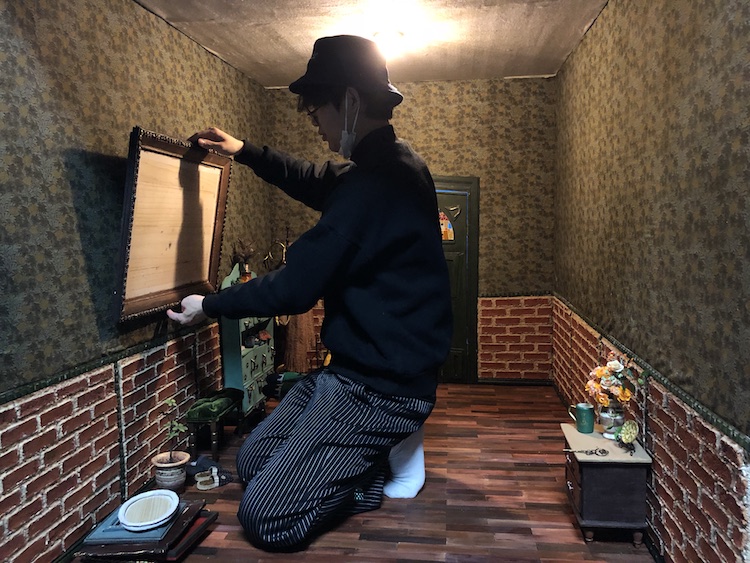
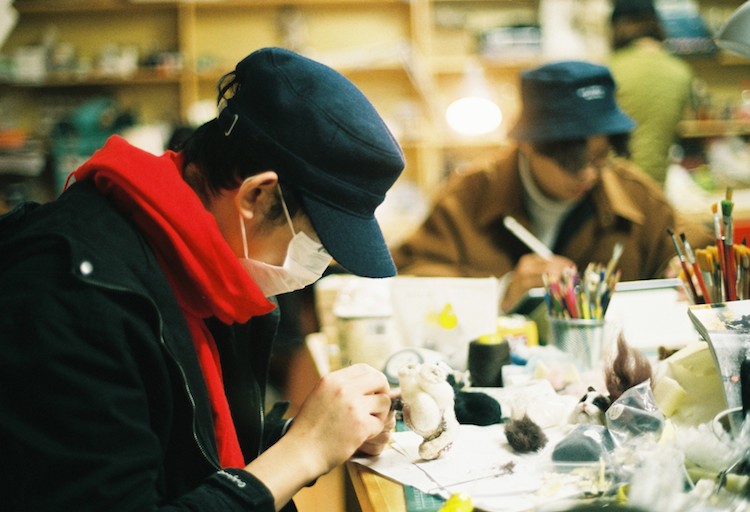
Viewers’ and critics’ comments are in unison. “Deep… poignant… incredible… heart-stirring… brilliant”. Since its world premiere at the Los Angeles International Children’s Film Festival in December 2018, Realwood Studio’s The Quintet of the Sunset has been recognized in film festivals around the world and won prestigious awards. Ever since winning the Vimeo Staff Pick distinction at the 2019 Cannes Film Festival against stiff competition, there is seemingly no stopping it anymore – the video has gone viral and pops up wherever you go on social media.
Having been alerted to this gem by none other than Richard Saunders, creator of the legendary Topiary Cat, we wanted to go beyond the buzz and asked director Jie Weng (翁劼) and Ke Ma (马珂) of Yilisoo Films, Jie Weng’s international sales agent, to tell us more.
What was your inspiration for creating The Quintet of the Sunset?
Jie Weng: One day, while we were brainstorming new ideas, a friendly stray cat showed up at the door begging for food. Suddenly it came to me: why don’t we tell a story about cats? Although we don’t have one at our studio, we keep cat food at the office and feed the neighborhood felines all the time. Making friends with those lovely creatures allows me to have a better understanding of the connections between people and animals: what we expect from the relationship with the animals reveals how we want to be treated and respected. By narrating Gina’s changes and growth through a cat’s first-person perspective, I intended to offer a fresh insight into deep emotions.
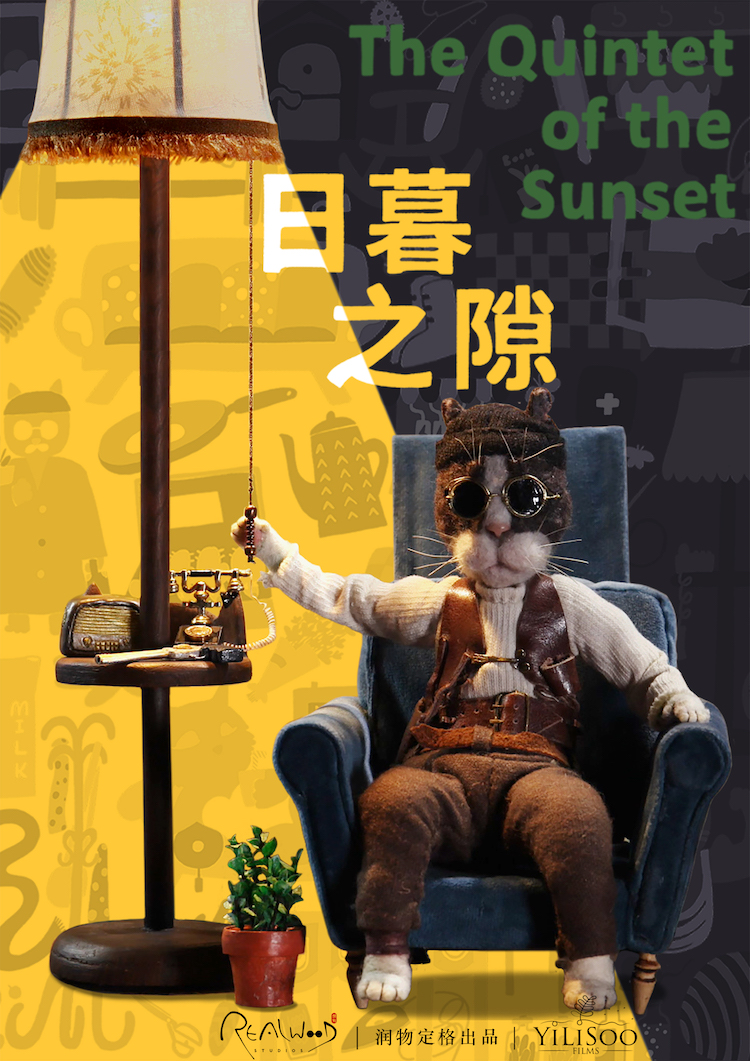
What’s the difference between showing your film at a festival versus releasing online?
Ke Ma: I do not see a release in film festivals and a release online as opposites but in fact complementary. They each have their own characteristics and affect the public differently. In a theater, you watch the film live together with other spectators, with whom you share sighs, laughers, gasps and tears. Online, you watch it alone or with some friends, but you then have a whole, cross-border community at your fingertips with whom you can share your thoughts on the film you have watched.
The challenge for me is more to organize the different forms of exploitation (theatrical, TV, home video, vod, online) in a coherent calendar that allows each of them to exist and avoid the phenomenon of cannibalism between the different media. This question was discussed in France at the end of last year by the way, when the various professional organizations of the cinema industry and television channels agreed together on a new media release chronology agreement.
As the film has been released in a significant number of festivals around the world, now was a good time to let it reach a wider audience through its online release. It is so great that people who could not attend the film festivals where it was screened will also now be able to see the film and we are grateful to Vimeo to give us this opportunity.
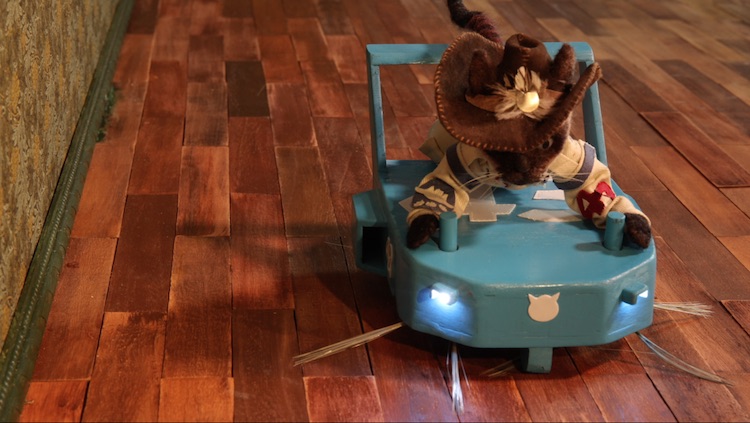
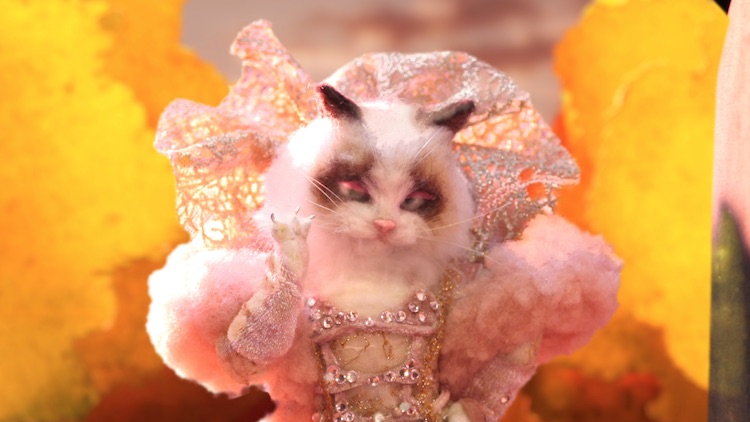
What were the challenges you faced when making this film?
Jie Weng: Stop motion is well-known for being labor-intensive but it brings a sense of warmth because artists can add their personal touch. The production of The Quintet of the Sunset took us longer than planned: we were constantly seeking to improve our work and ended up spending about eight months on this project outside post-production. The main challenge was to build every single object on the set, and we went into very fine detail. Also, there was a difference between the small size of the set and our team members’ life size. So, we had to constantly watch each of our movements while moving the puppets and the objects for the shooting.
Are animated short films with a meaningful story (often with animal characters) the Realwood trademark, or do you do other films/genres as well?
Jie Weng: Realwood Studios do produce other films/genres; one of them, for instance, is a short film adaptation from a long-form titled “A Stroll in the Garden and an Interrupted Dream”, based on “The Peony Pavilion”, a romantic tragicomedy written by Chinese playwright Tang Xianzu during the Ming Dynasty. But the common denominator to all Realwood Studios films, and our “marque de fabrique”, is the stop motion technique.
Are Realwood films distributed in China, and what reception do you get there?
Jie Weng: Yes, The Quintet of the Sunset, as well as the other films produced by Realwood Studios are distributed in China where they are very well received. Some of the characters from the films have even become characters for commercials on television and on the Internet.
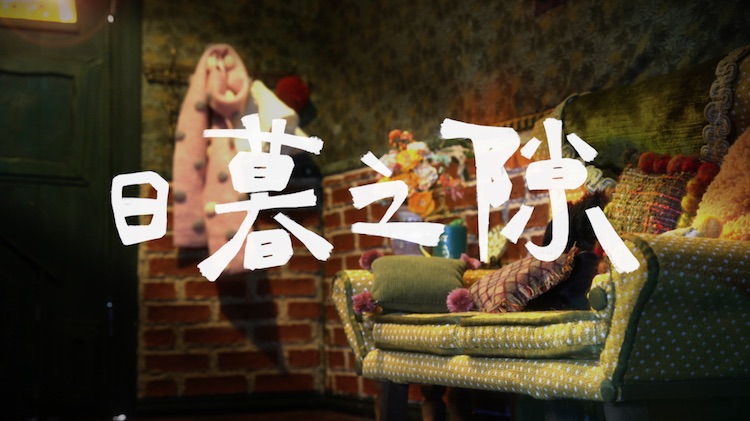
Are there any differences in Chinese and Western film storytelling?
Ke Ma: Nowadays, I don’t think that we can distinguish differences in storytelling between Chinese and Western films. Because the diversity of art and the diversity of filmmakers cannot be easily distinguished as a concept of East and West, I think the way of telling stories is more of a personal distinction.
If there is a difference between the East and the West, it is more about the philosophy than the storytelling. For example, we treat love, death, religion differently, and have a different sense of humor. The way of expression in the East is often more forbearing, subtle. For instance, one simple gesture may represent the heart’s emotions. So the difference is more in the thinking and the way to express oneself.
How has your experience working in France been? Is it difficult to get a foot in the door?
Ke Ma: It is indeed hard to work in France as a foreigner and more specifically in the film industry, where it is generally very hard to find a job, as there are not many offers and strong competition for the few that are proposed. However, the French film industry has a very good soft funding system, which supports a diversity of films and authors from all around the world.
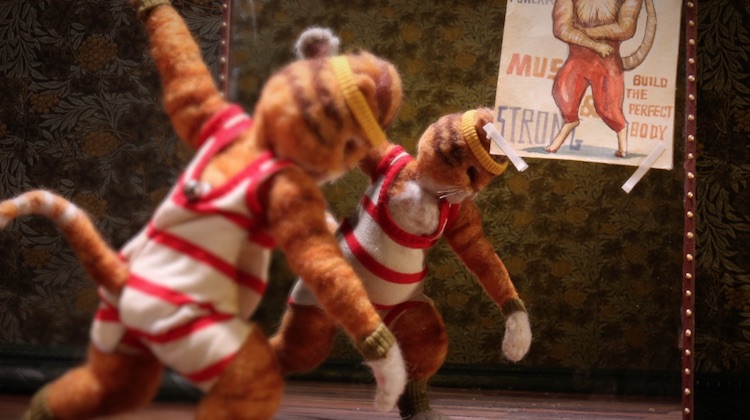

What is your best piece of advice to aspiring stop-motion filmmakers?
Jie Weng: My specialty at university was sculpture. During the production of my stop motion shorts, the knowledge of materials and their physical properties I had gathered during my studies, and the never-ending testing and discovery of new materials is what helped me the most. In stop motion, good ideas actually come from the material and the possibilities we can create with them. So, understanding materials, how they look like on film, how they react under certain conditions and light… knowledge that seems basic and far from cinema is actually of extreme value on the shooting of a stop motion film.
What’s next? Any upcoming projects?
Jie Weng: Our new project at Realwood Studios is adapted from an ancient Chinese tale Kua Fu chasing the Sun (夸父逐日). One day, Kua Fu decided to chase and catch the Sun. He followed the Sun from the East to the West, draining the Yellow River and the Wei River to quench his burning thirst. As he searched for more water, he died of dehydration. The wooden club he was carrying grew into a vast forest of peach trees called Deng Forest. In modern Chinese usage, the story of Kua Fu chasing the Sun is used to describe a person who fails to obtain his goal because he greatly overestimates himself.
Ke Ma: Another project Yilisoo is working on is a feature-length coproduction between Canada, France and Taiwan. The project entitled “The Sleepless Girl” is a mockumentary based on the final short film that the director François Chang directed at the end of his studies at La Fémis in Paris. The story follows the investigation of an Asian living in France who discovers a strange murder case in Taiwan and then in Japan, that will immerse him in the porous border between dream and reality.
Are you planning on screening this or any of your films in Nice which has a focal point on cinema this year as it celebrates its centennial as a film city?
Ke Ma: At this moment, we do not have any scheduled screening in Nice, but if a film festival or a movie theater would like to organize a screening, we would definitely be glad to show our films in Nice and meet the audience from Nice.
– TAAFI – Toronto Animation Arts Festival International 2019
– Monstra – Lisbon Animation Festival 2019
– Mecal – Barcelona International Short and Animation Film Festival 2019
– Cortoons Festival Gandia 2019
– International Animation Film Festival Golden Kuker – Sofia 2019
– Constantine’s Gold Coin – Nis 2019
– Animation Nights New York 2019
– Animation Nights New York special selection for Cannes 2019
– Dumbo Film Festival – New York 2019
– Un Court Tournable – Paris 2019
– Toshima City Award – Tokyo Anime Award 2019
– Vimeo Staff Pick Award in Cannes 2019
![]()
All images courtesy Yilisoo Films


Leave a Reply